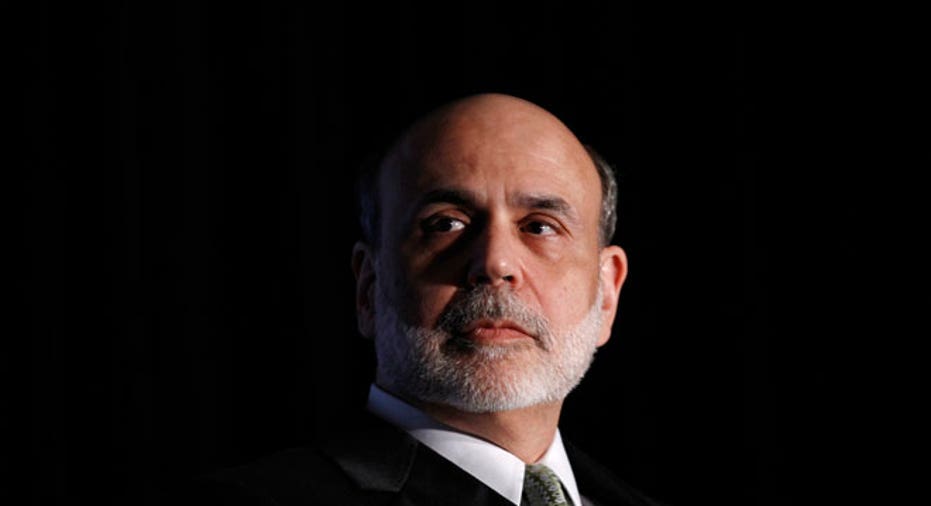Fed To Decide on Tapering This Week -- To Delay or Not

Outgoing Federal Reserve Chairman Ben Bernanke isn’t getting a free pass in his last few days at the helm of the U.S. central bank.
The policy-setting Federal Open Market Committee (FOMC), which starts two days of meetings on Tuesday and will announce any policy changes at 2 p.m. ET on Wednesday, has a big decision to make on tapering.
Bernanke, as he has throughout his two terms as chair, will play the role of consensus maker, the leader skilled at bringing many disparate voices together into agreement on a broad central policy.
Bernanke is stepping down on Jan. 31 and this is his last policy meeting as Fed chair. Janet Yellen, Bernanke’s longtime second-in-command, is replacing him.
The decision before the FOMC this week is whether or not to continue scaling back the Fed’s bond purchase program known as quantitative easing, or delay tapering for a month or so while awaiting stronger economic data.
In December, the Fed announced it would begin reducing its $85 billion monthly bond purchases by $10 billion each month until the program winds down entirely by the end of this year. At the time, Bernanke took pains to explain that the tapering policy wasn’t written in stone and would be flexible, adapting as necessary to current economic data.
Tapering, Bernanke explained, could be accelerated if the economy seemed to strengthen more than anticipated in the coming months, or slowed if the economy showed renewed signs of struggling.
No Time for Bernanke to Relax
It would have been a much more relaxing meeting for Bernanke this week had the data -- especially in the turbulent U.S. jobs market -- continued to maintain the momentum gained in October and November, when an excess of 200,000 jobs was created each month.
But that wasn’t the case. The December labor market report released earlier this month was surprisingly weak (74,000 new jobs, far below the 196,000 forecast), and that has led to speculation the Fed might hold off for a month on the next round of tapering.
What’s more, stock markets have been reversing course in recent weeks, falling steadily for the first time in years as global markets react to upheaval in many emerging markets and at the same time digesting the loss of billions of Fed-printed dollars.
Both -- or either-- of these factors might compel the Fed to delay tapering at this week’s meeting.
Or not.
Richmond Fed President Jeffrey Lacker said earlier this month that the Fed wasn’t likely to alter its course based on one disappointing jobs report. Lacker said the U.S. would have to undergo “a couple of quarters” of weak data to shift the Fed’s view that the economy is improving.
Many analysts also believe the Fed will stay the course, moving forward with tapering even as emerging economies and U.S. labor and stock markets experience a hiccup.
“While recent stock market declines may give the committee some pause for thought, they are likely to continue to reduce these purchases, probably to a pace of $65 billion per month, as a combination of a fast-falling unemployment rate and moderate economic growth make today’s extremely accommodative stance seem ever more inappropriate,” said David Kelly, chief global strategist JPMorgan Funds.
It’s true that, despite the weak jobs growth in December, the unemployment rate fell to 6.7% from 7% a month earlier. The jobless rate is now at its lowest level in five years.
Tapering Praised for Flexibility
But Fed policy makers are acutely aware that the rate isn’t necessarily falling for the right reasons -- robust job growth. Instead it’s falling because hundreds of thousands of Americans are leaving the workforce each month, many out of frustration that they can’t find a job. When people leave the workforce they are no longer counted by the government as unemployed, which helps drive down the headline unemployment rate.
Indeed, the plight of the long-term unemployed (or those out of work for 27-weeks or more) has pushed to the top of the national agenda. The issue will reportedly be a central theme of President Obama’s State of the Union address on Tuesday night.
In any case, the Fed’s tapering strategy has been widely praised precisely for its flexibility. The two previous bond purchase programs initiated by the Fed in the wake of the 2008 financial crisis ended suddenly, which proved jarring to markets. The whole idea of tapering is to ease the markets back to normalcy while not pulling the plug on stimulus too soon. For that reason the Fed is widely expected to allow the gradual scaling back to continue this month.
The Fed has been known to pull some surprises, though.
FOMC members are also expected to stress that the tapering policy is not tied to a separate but related policy that has kept interest rates at near-zero since December of 2008. In other words, just because the Fed has begun scaling back its easy money policies, that doesn’t mean short-term interest rates will be raised any time soon. To the contrary, the Fed has said it expects to keep the key fed funds rate at near-zero until “well past” it hits 6.5%, a target threshold set months ago as a barometer of when the economy might be able to stand on its own again.



















